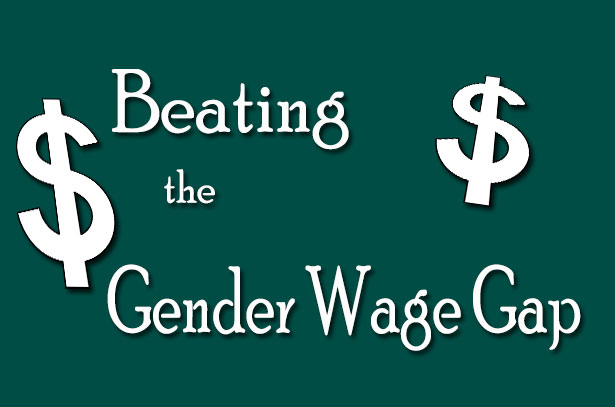
On average women face a gender wage gap, we’re told. How much is hard to pin down, although the most common gap tossed around is that women earn 77 cents for every dollar a man earns.
If you're in college right now, here are two secrets you can use to beat the gender wage gap and earn as much as a man:
- Pursue/earn a BS degree in Engineering or Economics/Business.
- Choose a job with the following attributes:
- a work week of 45 hours or more;
- higher earnings growth options such as performance bonuses;
- less job security and stability; and
- no part-time or flexible work schedule options.
Not your ideal preferences? Don't be dismayed. You're among the majority of American women, according to a new study published at the National Bureau of Economic Research last month.
Researchers surveyed a pool of high ability male and female college students to ascertain their personal preferences in college majors and in future job characteristics. Four years later, follow-up surveys were conducted on a subset of those student graduates who were working to determine how closely their actual job characteristics aligned to their earlier preferences.
What Researchers Learned
- Women in far greater numbers than men choose college majors in the Humanities and Social Sciences (majors that offer lower paying jobs, but greater job security and work schedule flexibility) than in Engineering or Economics/Business (majors that offer higher paying jobs, but lesser job security and work schedule flexibility).
More importantly, researchers found that women make these choices knowledgeably and intentionally:
We find that students believe that completing a major in the Humanities would lead to being offered jobs with fewer work hours, greater work hours flexibility, lower job dismissal probability, and lower earnings uncertainty than if they were to complete majors in Economics/Business. Students believe that the jobs they would be offered if they completed a major in Economics/Business would, on the other hand, offer higher salaries and greater earnings growth.
- Women willingly give up higher earnings to obtain non-monetary job attributes, such as flexible work schedules, part-time work availability, and greater job security.
- Both men and women in the study pursued jobs with characteristics that aligned to their preferences.
Importantly, for a subset of the sample for whom we collect data on actual workplace characteristics (nearly four years after the survey), we find a robust systematic relationship between estimated preferences and self-reported actual characteristics.
The bottom line is this. A woman can beat the "gender wage gap" any time she wants to. And plenty of women actually do.
On average, though, most women don't want to.
Women’s priorities and preferences are different from men’s. Women tend to be long-range planners, so they choose careers with stability and security over less stable and secure ones. Women also choose careers that offer them a range of work scheduling options so they can balance work-family demands more easily. If those careers come with lower salaries, so be it.
It all comes down to personal choices, and that’s a good thing. But it’s why, on average, all full-time women are paid less than all full-time men, and why, on average, the so-called "gender wage gap" will persist.
Source: Preference for the Workplace, Human Capital, and Gender, Matthew Wiswall and Basit Zafar, Working Paper No. 22173, National Bureau of Economic Research, April 2016.
For more on this issue, check out what Dr. Christina Hoff Sommers, a CBLPI campus speaker, has to say in this short video:

